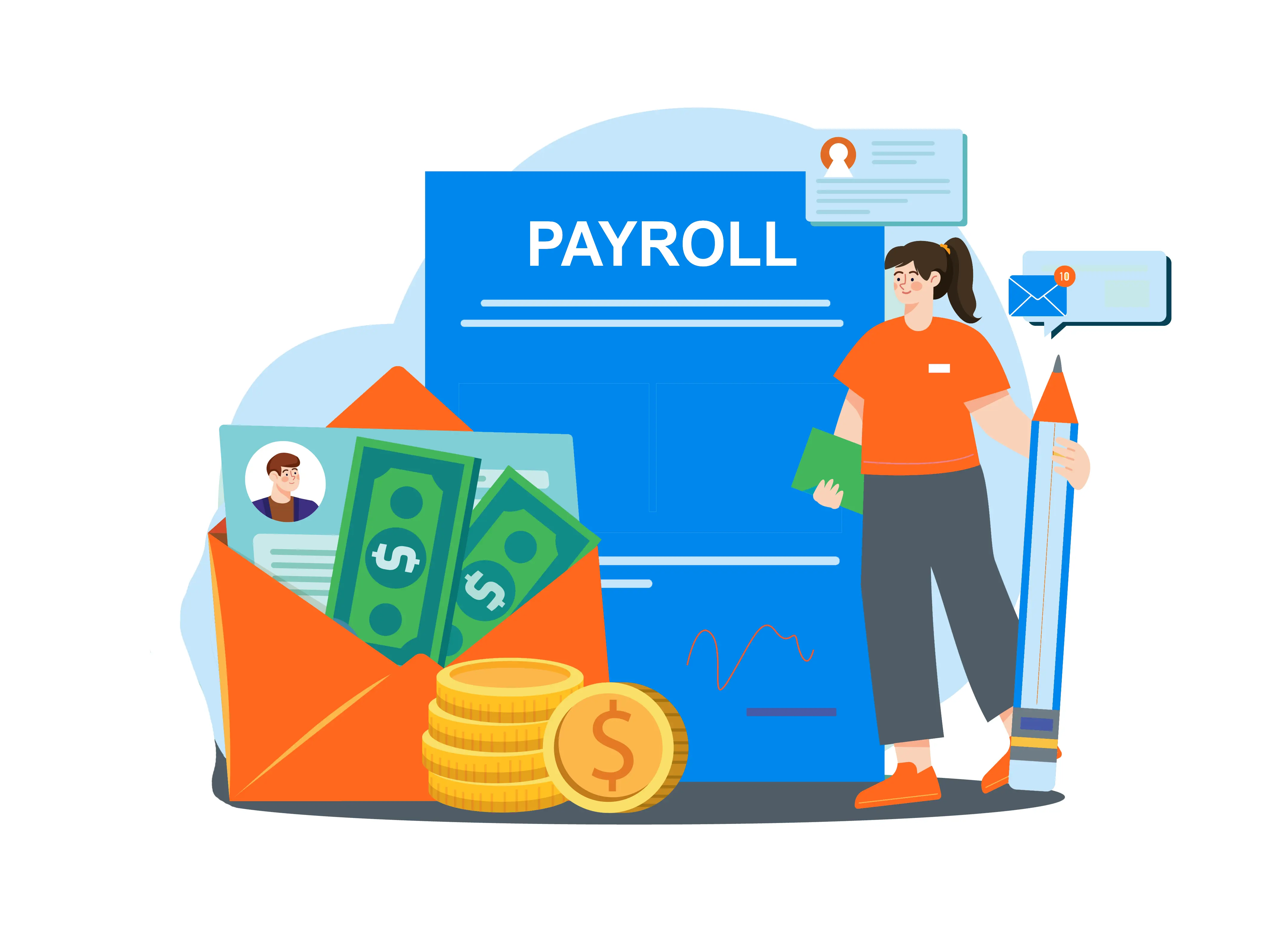9 Ways to Simplify Payroll For Small Businesses (Expert Tips)
Discover 9 ways to simplify your small business's payroll, with expert advice from business owners

For every 25 employees, a company will spend over 100 hours a year manually managing payroll. Labor costs account for 70% of expenses in a business, so finding ways to simplify payroll and reduce costs (without cutting wages) will make a big difference to profit margins.
Employing staff in salaried roles is one of the easiest ways to simplify payroll because the same amount goes out each month. But for many businesses, especially service-based businesses like tutoring companies, home healthcare professionals, swim schools, and personal trainers, salaried roles aren’t always the best option — hourly rates are. So if the paychecks you write vary from month to month, can you still simplify your payroll process?
It would be a pretty short article if you couldn’t!
Here are nine ways to simplify payroll for small businesses, with real examples and advice from business owners and HR professionals.
- Set clear expectations with a payroll schedule
- Avoid penalties by tracking important dates
- Automate your payroll process
- Correctly categorize your workforce
- Create a digital filing system
- Pay employees via direct debit
- Create a payroll FAQ document
- Stay up-to-date on payroll regulations
- Outsource to payroll provider
- BONUS - take advantage of tax credits
How to simplify your company’s payroll (whether you pay by the hour, salary, or somewhere in between)

1. Set clear expectations with a payroll schedule
A set payroll schedule is one of the easiest ways to simplify payroll for both your employees and the person (or department) running payroll. A set schedule means everyone knows when to expect their paycheck, so you won’t need to field questions about when payday is. For your payroll team, a schedule gives them a deadline for processing payroll, enabling them to plan ahead and ensure they have all the information they need.
Decide on a payroll schedule that works for your business: weekly, bi-weekly, twice a month (semi-monthly), monthly, etc. Keep in mind that depending on where your business operates, you may be mandated to pay on a specific schedule; for example, in British Columbia, Canada, employees must be paid twice a month, and in Arizona, US, paydays can’t be more than 16 days apart. If government regulations do not restrict you, consider what makes sense from a cash flow perspective.
To determine the right payroll schedule for your business, consider the following
- How often do your customers pay you?
- How often do you have to pay suppliers?
- Are your employees working set shifts on an as-needed basis or full-time?
- Do you pay employees hourly or a salary?
- Who is processing payroll? (If you balance this task alongside others, is batching it into one payroll a month better than processing it every week?)
- How many employees do you have? (Ie. how big is the task)
- Are there state/provincial requirements you must adhere to?
- How often do your employees want to be paid?
2. Avoid penalties by tracking important payroll dates
40% of small businesses incur an average of $845/year in penalties due to mismanaged payroll processes. To avoid unnecessary fees and reduce payroll costs, keep track of important tax dates, avoid late payments, and stay up-to-date on the laws and regulations in your industry and state/country.
3. Automate your payroll process
Small businesses spend an average of 120 working days a year on administrative tasks, according to a report by Sage (a cloud accounting software).
120 DAYS!
Automating as much of your payroll process as possible will simplify this recurring task and save you a lot of time. Eliminating manual timesheets and moving to automatic time-tracking is one easy way to simplify payroll. Implementing HR software for payroll can further streamline and enhance your payroll management, making the process even more efficient and accurate.
It’s a tactic that’s worked for Fred Hoffman, found of The True Wilderness, who says, “firstly, we have deployed an automated payroll system. This system accurately records employee hours and earnings, reduces manual data entry, and eliminates the need for tedious manual calculations. We are also using a cloud-based payroll service to streamline the process further. Through this platform, all relevant documents are securely stored in one place and can be accessed easily.”
For appointment-based businesses, look for an all-in-one appointment management software like MarketBox with built-in employee time tracking features. MarketBox enables service providers to mark jobs as arrived and completed, automatically logging their hours, so there’s no need to request, sort, or transcribe paper timesheets.
Use payroll software
The cloud-based payroll software market is expected to reach $10.7 billion by 2026, largely due to the many benefits payroll software offers businesses, especially small businesses without a dedicated payroll department.
Payroll software
- Is efficient
- Reduces errors
- Stores important data for easy access (particularly convenient come tax season)
- Eliminates paper clutter
- Enables fast, digital payments to employees
- Calculates taxes
- Generates pay stubs
Using payroll software was the number one tip for simplifying payroll from our panel of business owners and HR professionals, including Amy Duggan, owner of Bow Waus, a dog walking/pet sitting service in Philadelphia.
“As a small business owner, I am constantly juggling many tasks, and I tremendously appreciate any tools that help me streamline my processes. As such, I use Gusto as my payroll company. They've been an invaluable resource in running payroll. I know that all the taxes are properly withheld for my employees, part-time and full-time, and they made worker's compensation easy to set up. Additionally, they made it possible to set up health benefits for myself and my team as a small business. Their compliance tools help me make sure I am following all labor laws, and I have my employees clock their time through Gusto as well. When payroll comes around, I only have to push a button."
4. Correctly categorize your employees
The types of workers you employ impacts your payroll responsibilities, particularly regarding withholding taxes. Correctly categorizing your workforce is essential and helps avoid expensive penalties or the need for back payments to rectify mistakes (or worse, trying to get back overpayments from your staff).
Using modern software, payroll processes can be streamlined effectively even with varying paychecks, and worker categorizations. For example, SenseHR software provides a comprehensive solution that tracks time and attendance for different worker types. SenseHR software for large enterprises provides essential tools like the Sense Gateway and mobile app, which work seamlessly without the need for additional integrations.
For smaller companies, it also has options that are easy to implement and manage, making it accessible for businesses of all sizes. By using these modern time and attendance options, businesses can simplify payroll management while ensuring accuracy and efficiency across diverse teams.
If you’re in any doubt about worker classifications, seek professional advice; the upfront cost will be worth it in the long run.
Related: Independent Contractor vs. Employee: What’s the difference? [Service Business Edition]
5. Create a digital filing system to stay organized
Aside from switching to automated time tracking, as we discussed above, moving to a digital filing system will help simplify payroll for your small business. Manual records are lost ten times more often than electronic records. They’re also more vulnerable to employee time theft (when an employer unknowingly pays an employee for the time they didn’t work while on the clock.
A digital filing system makes it easy to keep track of paperwork, timesheets, invoices, tax returns, pay stubs, etc., and eliminates the hours you spend searching for information. When it’s time for payroll or to file taxes, all the information you (or your accountant) needs is easy to find.
As with any digital files, don’t forget to back them up somewhere secure, just in case!
6. Pay employees via direct debit & eliminate physical paychecks
Another easy way to simplify payroll for your small business is to get employees to set up direct deposit. Digital payments are deposited into accounts quicker, eliminate the risk of paychecks being lost or damaged, and save time as you don’t need to sign multiple checks every month. Direct debits are also much more convenient for employees, who no longer have to deposit their paychecks manually.
As an added bonus, you might even pay lower fees on your business bank account if you opt out of a business checkbook.
7. Create a payroll FAQ document
Corey Tyner, founder and president of Buy Yo Dirt, a land-buying real estate company in the US, offered up a unique tip that will help small businesses simplify payroll in just a few minutes — an FAQ document.
“Employees may have questions about their pay, taxes, or deductions, which can take up valuable time for HR and payroll staff. By creating a payroll FAQ that answers common questions, you can help reduce the number of inquiries and streamline the payroll process” — Corey Tyner.
8. Stay up-to-date on payroll regulations
If you’re managing payroll in-house, you’re responsible for staying updated with payroll regulations. “Regulations governing payroll can be difficult to understand and vary significantly between industries and states. Owners of businesses can avoid compliance concerns and ensure that they are following all applicable rules and regulations by ensuring that they are up to date on all of the most recent regulations and requirements.” (Olivia Tonks, Fleet Tutors)
By staying current on payroll regulations, you can simplify payroll processes by ensuring you don’t have to make retroactive payments/changes to stay compliant. If it’s necessary to modify your wages or pay structure, you can do so quickly to avoid issues down the road.
9. Consider outsourcing to a payroll provider
Finally, the easiest way to simplify your small business’s payroll is to outsource it to professionals. If you have the budget and don’t want to spend time processing payroll or researching regulations and compliance laws, outsourcing to a dedicated payroll provider is an excellent choice.
Side note: outsourcing payroll is surprisingly affordable, and the time saved, and little-to-no risk of errors or surprise tax bills might be more than worth the monthly cost.
Outsourcing payroll from day one is a tactic Paige Arnof-Fenn, founder and CEO of Mavens & Moguls, a digital marketing agency, swears by. “I used a one-stop shop to make it easy for me to focus on running and growing my business. I have dozens of contractors in various states, and their service is seamless. Everyone always tells me I am the first person to get them all their tax documents after the first of the year, but that is thanks to my service, not me. It is definitely more cost-effective for a small business like mine to use them versus hiring someone to do this for my firm. As a mentor of mine once said, any problem that can be solved with money is not a problem if you have the money!.”
Tip: Take advantage of tax credits
Last but not least, don’t forget to research small business tax credits that can help offset payroll costs and reduce the tax burden for small businesses. To avoid missing out on eligible credits, consult with a tax professional to determine what credits your small business is eligible for and how to claim them.
Final thoughts
As a small business owner, you can simplify payroll in multiple ways — not least by outsourcing it all together. The most important takeaway, though, is to stay organized so that whenever and however you choose to process payroll, you have the information you need to do it efficiently and accurately.
Ready to transform your scheduling and operations?
Talk to our sales team and see how MarketBox can help you achieve more with less effort




.svg)
.jpeg)
